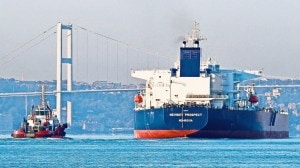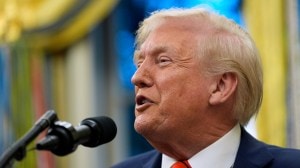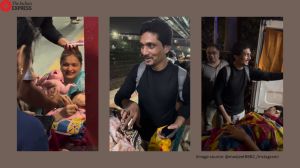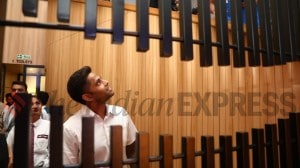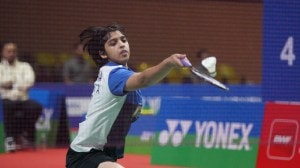Ritu Sarin is Executive Editor (News and Investigations) at The Indian Express group. Her areas of specialisation include internal security, money laundering and corruption. Sarin is one of India’s most renowned reporters and has a career in journalism of over four decades. She is a member of the International Consortium of Investigative Journalists (ICIJ) since 1999 and since early 2023, a member of its Board of Directors. She has also been a founder member of the ICIJ Network Committee (INC). She has, to begin with, alone, and later led teams which have worked on ICIJ’s Offshore Leaks, Swiss Leaks, the Pulitzer Prize winning Panama Papers, Paradise Papers, Implant Files, Fincen Files, Pandora Papers, the Uber Files and Deforestation Inc. She has conducted investigative journalism workshops and addressed investigative journalism conferences with a specialisation on collaborative journalism in several countries. ... Read More
After six years of cataloguing, Jain now chases conspiracy
NEW DELHI, November 19: Having spent almost all of six years cataloguing the sequence of events which led to Rajiv Gandhi's assassination, ...

NEW DELHI, November 19: Having spent almost all of six years cataloguing the sequence of events which led to Rajiv Gandhi’s assassination, Justice MC Jain is now facing an uphill task: he has just three months left to rush through the conspiracy part of the probe which is to be packaged as the commission’s second and final report.
Sources maintain that the conspiracy part is being tackled by the Jain Commission in three segments: LTTE’s links with other Indian and foreign secessionist organisations; funding of the LTTE operations and the groundswell of support for the LTTE’s suicide squad (which killed Rajiv) from local politicians of Tamil Nadu and Karnataka.
The premise on which the commission has been working so far is that the Sriperumbudur strike was a combined hit by the LTTE as well as other militant organisations, primarily Sikh and possibly some North East groups. Besides, the deposition of Mahant Seva Dass, president of the Pheru Man Shiromani Akali Dal, the commission has with it several reports of the Intelligence Bureau and the Research and Analysis Wing (RAW) to buttress its theory of larger conspiracy.
On the links between the LTTE and Sikh militant groups, sources say, the Commission has copies of RAW reports which mention the “growing nexus” between various militant groups and have been annexed with the interim report. One note (u.o. 4/1/87-VS 2306) had furnished information to the Indian Government that LTTE operatives based in Oslo were trying to establish contacts with Sikh groups there. According to the RAW report, the Sikh groups repeatedly blamed Rajiv Gandhi for their plight and had suggested that he be killed.
Another RAW report speaks of Jagjit Singh Chohan, the expatriate Khalistani leader, making efforts to bring the LTTE and the Sikh groups under one banner. The report states, “Chohan is reported to also have told the late Naga leader, AZ Phizo (then in exile in the UK) in January 1988 that he intended to hold discussions with representatives of the LTTE in London.”
Besides this, the commission has information that on January 22, 1988, Chohan held consultations with two UK-based representatives of the LTTE at his home. During the meeting, discussions were held on the common issues concerning the Sri Lankan Tamils, the Sikhs and the Muslims as well as a common plan of action being launched against the Indian Government. At this meeting, Chohan and the LTTE leaders exchanged books written by their ideologues.
The commission, say sources, is using as circumstantial evidence intelligence reports and photographs which show that Sikh groups had eulogised and collected huge funds in the name of Dhanu, Rajiv’s assassin. One function was allegedly organised on May 24, 1992 in a gurdwara in West Midland by the Babbar Khalsa. Another such meeting was held in Germany around the same time. Photographs of these meetings have been attached to the interim report.
Sources, however, admit that while such information gives credence to the version of Seva Dass (that the Sikh groups as well as Chandraswami were involved), they still have gaping holes in their investigations. Funding of the operation remains virgin territory where the commission has been at pains to link Chandraswami, arms dealer Adnan Khashoggi and the LTTE.
Intelligence reports of three large shipments of sophisticated arms reaching the LTTE just before and after the assassination are being viewed by the commission as the “reward” the LTTE got for the Sriperumbudur strike.
Despite the deluge of leads, the commission has been clamouring for what it maintains is the “evidence” from the Government on aspects like the dealings of Chandraswami with various militant groups and arms syndicates. For instance, there is information that the Tower Commission appointed to inquire into the Iran-Contra affair too had mentioned the role of the tantrik and the BCCI in the supply of missiles. The Jain Commission, according to sources, has also learnt that a Senate sub-committee to study the liquidation of the BCCI, discovered that $84 million had been laundered in 1991. The report is believed to have mentioned that the money could have something to do with the assassination of the former Indian Prime Minister.
However, sources admit, these leads reach nowhere, for the conspiracy theory is yet to assume a coherent shape and that the commission is yet to receive copies of either of these two reports. Until such vital pieces of evidence come in and until the Government decides to “bare all” before the commission, its hope of presenting a watertight case of conspiracy may remain elusive.







Oct 18: Latest News
- 01
- 02
- 03
- 04
- 05









